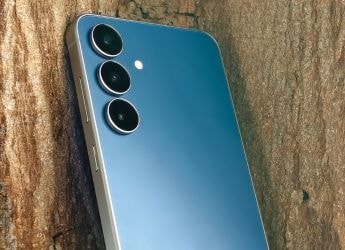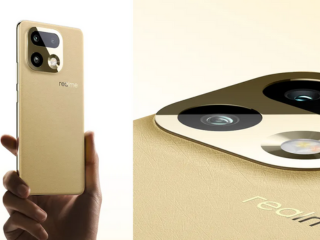- Home
- Science
- Science Features
- How Scientists Use the Fulcrum App to Collect Data in the Field
How Scientists Use the Fulcrum App to Collect Data in the Field
Using the app reduced reliance on paper and cut down the risk of data loss to rain and accidents.

Photo Credit: NCF
Fulcrum also offers an option to record the location and GPS coordinates of the beneficiaries
Fulcrum is an app that allows scientists to gather data and maintain entries generated in the field when carrying out their research and it has helped prevent the loss of data to random accidents. In today's age, mobile applications are very valuable and useful tools for us that enable us to carry out a variety of previously unimaginable functions. There are now apps that are designed specifically to collect data effectively for later use in communications, analysis, and more. These apps allow us to collect huge amounts and a wide range of data and also retrieve it quickly and easily. Given how data-dependent our work is, we started using an app called Fulcrum to assist in data collection.
Earlier, when there was no Fulcrum and we had to survey dozens of villages, it was very difficult for us to write down all the information on a data sheet. It was even more difficult to maintain the data records over time and to sort through hundreds of sheets for data entry. Data loss was the single biggest issue we faced with paper sheets. We lost some valuable data to rain, abnormal weather conditions, sheets getting torn, and some random accidents that are inevitable while using paper. Data once lost back then was as good as data lost forever. Things changed once we made the switch to using a tablet and the mobile app Fulcrum.
![]()
The team uses tablets to gather data from the field, which has eliminated the need for datasheets that can be easily damaged
Photo Credit: NCF
Coming from a small village nestled in the heart of Malai Mahadeshwara Hills Wildlife Sanctuary, I had never used any gadgets except a simple phone before, and this was a huge transition for me! Naturally, there was a learning curve and we all made lots of mistakes initially, but once we got good at it, there was no going back to using paper! It gave me immense happiness and joy to be able to update myself to the current times and use technology to carry out community work.
The tablet is easy to carry. The large screen makes it convenient to operate, and it is durable and has a protective cover so we don't panic if a few drops of water fall on it. Fulcrum presents an interface where we have customised the fields of data required and all we have to do is enter the data. It is much like filling a form online- easy, quick, and hassle-free.
All the data we enter on the tablet is uploaded to the cloud upon syncing whenever we get an internet connection, ready to be downloaded at our convenience to analyse. This also cuts down many hours of work for us that would otherwise be spent manually entering data on a computer. It even reduces the chances of human error which we would face while manually entering huge amounts of data at one go.
Armed with the tablet, we set out to survey and collect a wide range of data from villages where we identify beneficiaries for our various projects wherein we provide alternatives to firewood, and mitigate human-wildlife conflict by providing solar-powered lights and crop fences. Some of the typical data categories include the beneficiary's socio-economic information, their pattern of firewood collection and usage, geographical location, and much more.
![]()
To establish baseline usage and reduction in usage after switching to LPG, we weigh the amount of collected firewood for each beneficiary twice, for a period of 7 days each. This vast amount of data collection is made easy as one simply needs to enter the values and dates in the application
Photo Credit: NCF
Our experience with this technology isn't without its problems. There have been instances when improper syncing caused us to lose some valuable fuelwood weighing data, which was an extremely tough loss to bear as that kind of data takes us more than a week to collect for one village. But we adapted, and got better at handling small glitches and working our way around them.
Overall, this device and the mobile app together, are wonderfully effective tools for recording large amounts of information easily. We also record the numbers of animals and birds sighted during our field work without any additional effort, which earlier would have required us to draw up specific datasheets, and take out additional time for the task.
To put it into perspective, if we were to convert all the Fulcrum data collected in the last 4 years into A4 data sheets, we would easily fill up a large lorry with the load and perhaps even more. The most amazing part is that we're saving all this paper, reducing kilograms of trash and hours of manual labour simply by moving to one gadget half the size of an A4 sheet and an app that does most of the work for us.
During our surveys in various remote villages, when we bring out the tab to record the information, the locals are full of innocent curiosity, because this is something so new for them.
“What is this, sir?” they ask.
“This is so big, what do you do with it?”
“Can this cause us trouble or hurt us in any way?”
There are times when we've had to sit down and explain to them what the tablet is, and that it is simply a new way to collect information, and very similar to a mobile phone. I remember that's where I came from, and I smile when I tell them not to worry or be scared of the unknown gadget.
![]()
People are often curious about the tablet and have a bunch of questions to ask
Photo Credit: NCF
Compiled and edited by Phalguni Ranjan.
Ganesha N. works as a Field Coordinator for the community-based conservation project in the Western Ghats Programme at Nature Conservation Foundation.
Sanjay Gubbi works as a scientist with the Western Ghats Programme at Nature Conservation Foundation.
Phalguni Ranjan is a marine biologist working as a science and conservation communicator with the Western Ghats Programme at NCF.
This series is an initiative by the Nature Conservation Foundation, under their programme Nature Communication to encourage nature content in all Indian languages. If you're interested in writing on nature and birds, please fill up this form.
In 2020, will WhatsApp get the killer feature that every Indian is waiting for? We discussed this on Orbital, our weekly technology podcast, which you can subscribe to via Apple Podcasts or RSS, download the episode, or just hit the play button below.
Get your daily dose of tech news, reviews, and insights, in under 80 characters on Gadgets 360 Turbo. Connect with fellow tech lovers on our Forum. Follow us on X, Facebook, WhatsApp, Threads and Google News for instant updates. Catch all the action on our YouTube channel.
Related Stories
- Samsung Galaxy Unpacked 2025
- ChatGPT
- Redmi Note 14 Pro+
- iPhone 16
- Apple Vision Pro
- Oneplus 12
- OnePlus Nord CE 3 Lite 5G
- iPhone 13
- Xiaomi 14 Pro
- Oppo Find N3
- Tecno Spark Go (2023)
- Realme V30
- Best Phones Under 25000
- Samsung Galaxy S24 Series
- Cryptocurrency
- iQoo 12
- Samsung Galaxy S24 Ultra
- Giottus
- Samsung Galaxy Z Flip 5
- Apple 'Scary Fast'
- Housefull 5
- GoPro Hero 12 Black Review
- Invincible Season 2
- JioGlass
- HD Ready TV
- Laptop Under 50000
- Smartwatch Under 10000
- Latest Mobile Phones
- Compare Phones
- Huawei Nova 15
- Huawei Nova 15 Pro
- Huawei Nova 15 Ultra
- OnePlus 15R
- Realme Narzo 90x 5G
- Realme Narzo 90 5G
- Vivo S50 Pro Mini
- Vivo S50
- Asus ProArt P16
- MacBook Pro 14-inch (M5, 2025)
- Huawei MatePad 11.5 (2026)
- OnePlus Pad Go 2 (5G)
- Huawei Watch 10th Anniversary Edition
- OnePlus Watch Lite
- Acerpure Nitro Z Series 100-inch QLED TV
- Samsung 43 Inch LED Ultra HD (4K) Smart TV (UA43UE81AFULXL)
- Asus ROG Ally
- Nintendo Switch Lite
- Haier 1.6 Ton 5 Star Inverter Split AC (HSU19G-MZAID5BN-INV)
- Haier 1.6 Ton 5 Star Inverter Split AC (HSU19G-MZAIM5BN-INV)

















